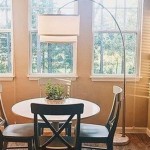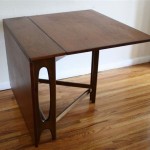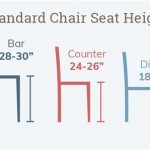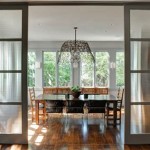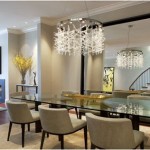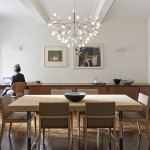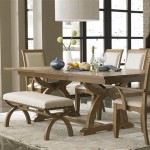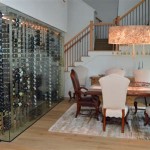How To Style A Dining Room
The dining room serves as a central gathering place within a home, facilitating meals, conversations, and celebrations. Styling this space effectively requires careful consideration of various elements, including furniture selection, color palettes, lighting, and decorative accents. The goal is to create an inviting and functional environment that reflects personal style while accommodating the practical needs of daily use and special occasions.
The overall aesthetic of a dining room should align with the existing architectural style of the home and the preferences of the occupants. Whether the desired outcome is a formal setting for elaborate dinners or a casual space for everyday meals, a strategic approach to styling is essential for achieving a cohesive and appealing result. This article will explore key considerations and techniques for styling a dining room to optimize its function and visual appeal.
Selecting the Right Dining Room Furniture
The dining table is undeniably the focal point of any dining room. Its size and shape should be proportional to the dimensions of the room. A table that is too large can overwhelm a smaller space, while a table that is too small may not adequately accommodate the intended number of diners. Common shapes include rectangular, oval, round, and square. Rectangular tables are generally suitable for larger rooms and can accommodate a greater number of people. Round tables foster intimacy and are well-suited for smaller gatherings. Square tables work best in square rooms.
The choice of dining chairs is equally important. Chairs should complement the style of the table and provide a comfortable seating experience. Considerations include the height of the seat, the presence of armrests, and the material used for upholstery. Upholstered chairs offer enhanced comfort, but may require more maintenance than wooden or metal chairs. The number of chairs should correspond to the intended seating capacity of the table, taking into account the potential for adding extra chairs for larger events.
Additional furniture pieces, such as buffets, sideboards, and china cabinets, can enhance both the functionality and visual appeal of the dining room. These pieces provide storage space for tableware, linens, and serving dishes. They can also serve as display surfaces for decorative objects and artwork. When selecting these items, it is important to consider their size and style in relation to the table and chairs. A cohesive furniture arrangement contributes to the overall harmony of the room.
Material selection plays a crucial role in the durability and aesthetic appeal of dining room furniture. Wood remains a popular choice for its warmth and versatility. Different types of wood, such as oak, maple, and walnut, offer varying degrees of durability and grain patterns. Metal frames provide a contemporary look and are often used in conjunction with wood or upholstery. The choice of materials should be consistent across all furniture pieces to create a unified appearance.
Integrating Color and Texture
The color palette employed in a dining room significantly influences the overall mood and atmosphere. Neutral colors, such as white, beige, and gray, provide a versatile backdrop that can be easily accented with pops of color. These colors create a sense of spaciousness and light, making them well-suited for smaller dining rooms. Bold colors, such as deep blues, greens, and reds, can add drama and sophistication to a larger space. However, it is important to use these colors judiciously to avoid overwhelming the room.
Wall color is a primary consideration. A lighter wall color can make a room feel larger and more open, while a darker color can create a more intimate and cozy atmosphere. Accent walls can be used to introduce a contrasting color and draw attention to a particular feature of the room, such as a fireplace or a window. The choice of paint finish also affects the appearance of the walls. Matte finishes absorb light and create a softer look, while glossy finishes reflect light and add a touch of glamour.
Texture adds depth and interest to a dining room. Incorporating different textures through fabrics, wall coverings, and decorative objects creates a more visually stimulating and tactile environment. A textured wallpaper can add subtle dimension to the walls, while a plush rug can provide warmth and comfort underfoot. Different types of fabrics, such as linen, velvet, and silk, can be used for upholstery and window treatments to introduce varying textures.
Decorative accents, such as artwork, mirrors, and plants, can further enhance the visual appeal of the dining room. Artwork can add personality and color to the walls, while mirrors can create the illusion of more space. Plants bring life and freshness to the room, and can also help to purify the air. The placement of these accents should be carefully considered to create a balanced and harmonious composition.
Optimizing Lighting for Ambiance and Functionality
Lighting is a critical element in dining room styling, as it affects both the ambiance and the functionality of the space. A well-lit dining room should provide adequate illumination for tasks such as eating and socializing, while also creating a warm and inviting atmosphere. A combination of ambient, task, and accent lighting is typically employed to achieve this balance.
Ambient lighting provides overall illumination for the room. This can be achieved through overhead fixtures such as chandeliers, pendant lights, or recessed lighting. Chandeliers are often used as a focal point in the dining room, adding a touch of elegance and sophistication. Pendant lights provide a more modern and minimalist look, while recessed lighting offers a clean and unobtrusive solution. The choice of ambient lighting should be based on the size and style of the room.
Task lighting provides focused illumination for specific activities. A common example of task lighting in the dining room is a pendant light or chandelier suspended directly above the dining table. This provides ample light for dining and conversation. Dimmable switches allow the intensity of the light to be adjusted to suit different occasions and moods. Table lamps and sconces can also be used to provide task lighting in other areas of the room, such as near a buffet or sideboard.
Accent lighting highlights specific features of the dining room, such as artwork, architectural details, or decorative objects. Track lighting and spotlights are often used to provide accent lighting. These fixtures can be directed to emphasize particular areas of interest, creating visual interest and adding depth to the room. Accent lighting can also be used to create a sense of drama and sophistication.
Natural light is another important consideration. Maximizing natural light can make a dining room feel brighter and more open. Windows should be strategically placed to capture natural light throughout the day. Window treatments, such as curtains or blinds, can be used to control the amount of light entering the room. Sheer curtains allow light to filter through while providing privacy, while heavier curtains can be used to block out light when needed.
The type of light bulbs used also affects the overall ambiance of the dining room. Warm-toned light bulbs create a cozy and inviting atmosphere, while cool-toned light bulbs provide a more bright and energizing effect. LED bulbs are energy-efficient and long-lasting, making them a popular choice for lighting fixtures. The color temperature of the light bulbs should be consistent throughout the dining room to create a unified look.
In conclusion, styling a dining room involves a multifaceted approach that considers furniture selection, color palettes, lighting design, and decorative accessories. The objective is to create a space that is both aesthetically pleasing and functionally efficient, serving as a welcoming and comfortable gathering place for meals and social interactions. Careful attention to detail and thoughtful planning are essential for achieving a dining room that reflects personal style and meets the specific needs of the occupants.

10 Formal Dining Room Ideas From Top Designers

Inviting Dining 33 Room Decorating Ideas Hgtv

7 Tips For Grandmillennial Style In The Dining Room Pender Peony A Southern Blog

7 Dining Room Styles To Fit Every Home Tyner Furniture

80 Elevated Dining Room Ideas Perfect For Entertaining In 2025

House Home The Best Cottage Dining Rooms That Will Inspire You

Six Dining Room Interior Design And Decor Ideas

How To Decorate A Small Dining Room According Design Experts

Before After Transitional Dining Room Perfect For Hosting Decorilla Online Interior Design

How To Update Dining Room Furniture Setting For Four Interiors

